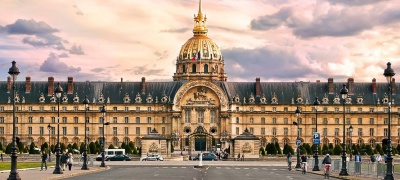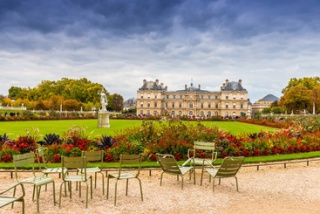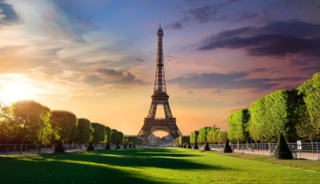Sotheby's International Realty
- 138 Avenue Victor Hugo
- 75116 PARIS, France
- +33 1 40 60 50 00
Sotheby's International Realty
- 50 rue d'Auteuil
- 75016 PARIS, France
- +33 1 56 26 56 55
Sotheby's International Realty
- 82 Avenue de Wagram
- 75017 PARIS, France
- +33 1 46 22 27 27
Sotheby's International Realty
- Place Sainte Foy - 2 Rue de Chézy
- 92200 NEUILLY, France
- +33 1 41 43 06 46
Sotheby's International Realty
- Place Sainte Foy - 2 rue de Chézy
- 92200 NEUILLY, France
- +33 1 41 25 00 00
Sotheby's International Realty
- 37-39 rue de Turenne
- 75003 PARIS, France
- +33 1 48 87 14 41

- Home
- >
- Left Bank
Left Bank

Paris 5th District
The 5th Arrondissement of Paris: A Jewel of History and Prestige
The 5th arrondissement of Paris, known as the Latin Quarter, is one of the oldest in the capital and a privileged witness to its rich past. Its history dates back to the Gallo-Roman era when Lutetia, the ancestor of Paris, was a flourishing center of Roman Gaul. The Arènes de Lutèce, a 1st-century amphitheater, and the Thermes de Cluny, remnants of Roman public baths, are remarkable testimonies of this ancient period. During the Middle Ages, the district became a major intellectual and religious center with the founding of the University of Paris and the Sorbonne in the 13th century. The Sainte-Geneviève hill, the historical heart of the district, is marked by centuries of academic and religious activities, attracting students and scholars from across Europe. Throughout the centuries, the 5th arrondissement has preserved its heritage while evolving, seamlessly blending ancient relics, medieval monuments, and modern buildings in a unique architectural harmony.
The 5th arrondissement of Paris, also known as the Latin Quarter, is a true historical and architectural gem. Located on the left bank of the Seine, this iconic arrondissement is the cradle of the ancient city of Lutetia. It is filled with Gallo-Roman remains, including the famous Arènes de Lutèce and the Thermes de Cluny, which testify to Paris's millennia-old history. The 5th stands out for its harmonious mix of medieval buildings, Haussmannian structures, and modern constructions, offering a rich and diverse urban landscape.
Architecture and Heritage
The architecture of the 5th arrondissement is a true journey through the ages. The cobbled streets and small tree-lined squares are lined with medieval houses and buildings dating from the Renaissance. Among the architectural jewels is the Pantheon, a neoclassical masterpiece that dominates the Sainte-Geneviève hill and houses the tombs of the nation's great figures. The Sorbonne, a symbol of French academic excellence, and the Saint-Étienne-du-Mont church, with its remarkable rood screen, are also must-sees in the district.
Real Estate Market
The real estate market in the 5th arrondissement is one of the most prestigious and sought-after in Paris. The properties are varied, ranging from Haussmannian apartments with their high ceilings and moldings to perfectly appointed modern studios. The prices per square meter are among the highest in the capital, reflecting the attractiveness and historical charm of the district. Residents enjoy an exceptional living environment, combining old-world charm and contemporary amenities.
Attractions and Highlights
The 5th arrondissement offers an unparalleled quality of life thanks to its many assets. Its proximity to renowned academic institutions such as the University of the Sorbonne, the École Normale Supérieure, and the Collège de France attracts a dynamic student and intellectual population. The numerous cafes, bookstores, and art-house cinemas, like the Le Champo cinema, contribute to the cultural vibrancy of the district. The Luxembourg Gardens, with their vast green spaces, fountains, and statues, are a haven of peace for residents and visitors alike.
Among the most emblematic places in the 5th arrondissement, the Jardin des Plantes and its National Museum of Natural History offer an essential space for discovery and relaxation. The rue Mouffetard, famous for its picturesque market and food shops, is one of the oldest and liveliest streets in Paris. The rue des Écoles, lined with bookstores and cafes, is the beating heart of the Latin Quarter. Finally, the boulevard Saint-Michel, the main artery of the district, is a popular meeting place for Parisians and tourists.
In short, the 5th arrondissement of Paris is a neighborhood where history, culture, and elegance converge. Its remarkable architecture, prestigious real estate market, numerous assets, and iconic locations make it a sought-after destination for those seeking an exceptional living environment in the heart of the capital.

Paris 6th District
The 6th Arrondissement of Paris: A Jewel of History and Prestige
The 6th arrondissement of Paris, known for its sophisticated charm and artistic atmosphere, is one of the most iconic and sought-after neighborhoods in the capital. Located on the left bank of the Seine, it epitomizes Parisian elegance with its picturesque streets, legendary cafes, and world-renowned cultural institutions. Steeped in history, this arrondissement has long been a haven for writers, artists, and intellectuals, contributing to its unique and timeless aura.
Architecture and Heritage
The architecture of the 6th arrondissement is a true blend of styles, reflecting the various eras that have shaped this neighborhood. Haussmannian buildings with their elegant facades and wrought-iron balconies stand alongside 17th and 18th-century mansions, as well as modern buildings harmoniously integrated into the urban landscape. Among the architectural gems are the Saint-Sulpice Church, famous for its majestic proportions and astronomical gnomon, and the Abbey of Saint-Germain-des-Prés, one of the oldest churches in Paris.
Real Estate Market
The real estate market in the 6th arrondissement is one of the most prestigious and exclusive in Paris. Properties vary from luxurious apartments in historic buildings to modern and refined lofts. Prices per square meter are among the highest in the capital, reflecting the constant demand for this sought-after neighborhood. Residents of the 6th enjoy an exceptional living environment, combining modern comfort with historical charm, with privileged access to luxury shops, art galleries, and cultural institutions.
Assets and Attractions
The 6th arrondissement offers an unparalleled quality of life thanks to its numerous assets. Its proximity to renowned academic institutions such as Lycée Louis-le-Grand and the École des Beaux-Arts attracts an intellectual and creative population. Famous cafes like Les Deux Magots and Café de Flore, once frequented by literary figures such as Sartre and Simone de Beauvoir, remain popular meeting places. The Luxembourg Gardens, with their vast green spaces, fountains, and sculptures, provide a haven of peace for residents and visitors.
Landmark Sites and Famous Streets
Among the most emblematic places in the 6th arrondissement, the Musée d'Orsay, housed in a former train station, boasts an exceptional collection of Impressionist and Post-Impressionist art. The Odéon Theatre, one of France's six national theaters, is a major cultural venue in Paris. Rue de Seine, famous for its art galleries, and Rue Bonaparte, known for its luxury shops and prestigious publishers, are must-visit streets. Boulevard Saint-Germain, with its elegant boutiques and historic bookstores, perfectly embodies the sophisticated spirit of the 6th.
In sum, the 6th arrondissement of Paris is a neighborhood where history, culture, and elegance converge. Its remarkable architecture, prestigious real estate market, numerous assets, and iconic locations make it a coveted destination for those seeking an exceptional living environment in the heart of the capital.

Paris 7th District
The 7th arrondissement of Paris, also known as the "arrondissement du Palais-Bourbon," is named after the imposing Palais Bourbon, home to the French National Assembly. Historically, this arrondissement has always been a place of power and influence, hosting numerous government and diplomatic institutions.
The most iconic monument of Paris, the Eiffel Tower, is located in the 7th arrondissement. Built for the 1889 World's Fair, it has become a global symbol of France. The Musée d'Orsay, housed in a former railway station, boasts an extensive collection of Impressionist and Post-Impressionist art, featuring works by Monet, Van Gogh, and Renoir. The imposing Hôtel des Invalides complex includes the Army Museum and Napoleon Bonaparte's tomb. It was constructed under Louis XIV to house injured soldiers.
The 7th arrondissement is known for its elegant architecture and broad, tree-lined avenues. Haussmannian buildings, with their wrought-iron balconies and stone facades, dominate the urban landscape. Many historic buildings, private mansions, and embassies add to the architectural appeal of this area.
The 7th arrondissement includes several distinct neighborhoods: Gros-Caillou, located near the Eiffel Tower, is residential and highly sought after for its spectacular views and calm atmosphere; Saint-Thomas-d'Aquin, known for its art galleries and luxury boutiques, is also home to the Saint-Thomas-d'Aquin Church; École-Militaire, dominated by the École Militaire, a military academy founded by Louis XV.
The real estate market in the 7th arrondissement is one of the most expensive in Paris. Properties here are highly sought after, whether for primary residences, prestigious apartments, or investments. Prices vary depending on the proximity to landmarks, views, and architectural features of the buildings.
Living in the 7th arrondissement offers a mix of residential tranquility and urban dynamism. The streets are lined with chic cafés, gourmet restaurants, and designer boutiques. The Rue Cler market is a popular spot for fresh produce and local specialties.
The 7th arrondissement of Paris is therefore a place where history, culture, and elegance blend, offering an exceptional living environment for its residents and an unforgettable experience for its visitors.




